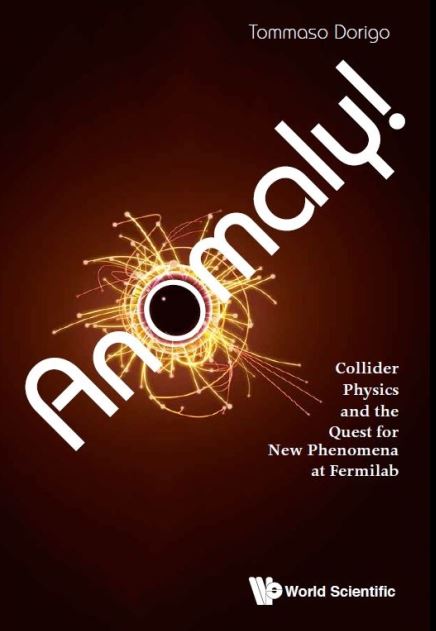Last week-end Padova researchers tested the first calorimeter and tracker prototypes of the iMPACT project at the APSS/TIFPA Proton Therapy Facility in Trento (Italy).
iMPACT (innovative Medical Proton Achromatic Calorimeter and Tracker) is a project led by Piero Giubilato, who won an ERC consolidator grant from the European Union. The project aims to develop a high resolution and high rate (>100 kHz/cm2) proton Computed Tomography (pCT) scanner. The scanner will combine a highly-segmented range calorimeter made of PVT scintillators, for energy measurements, and a silicon pixel tracker, for trajectory reconstructions.
It is nice when somebody publishes an article and acknowledges your contribution, even when the input or help you gave was really minimal. I found out today that Marco Matone, a theoretical phyisicist and colleague from the University of Padova,
published on the arxiv (and submitted to Physics Letters, where it will be published as
Phys.Lett. B772 (2017) 435-441) an article titled "Exponentiating Higgs" which quotes me in the acknowledgement section:
 The clip below, together with the following few which will be published every few days in the coming weeks, is extracted from the third chapter of my book "Anomaly! Collider Physics and the Quest for New Phenomena at Fermilab". It recounts the pioneering measurement of the Z mass by the CDF detector, and the competition with SLAC during the summer of 1989.
The clip below, together with the following few which will be published every few days in the coming weeks, is extracted from the third chapter of my book "Anomaly! Collider Physics and the Quest for New Phenomena at Fermilab". It recounts the pioneering measurement of the Z mass by the CDF detector, and the competition with SLAC during the summer of 1989.
Do you remember the infamous "g-2" measurement ? The anomalous magnetic moment of the muon has been for over a decade in the agenda of HEP physicists, both as a puzzle and as a hope for good things to come.
Ever since the Brookhaven laboratories estimated the quantity at a value over 3 standard deviations away from the equally precise theoretical predictions, the topic (could the discrepancy be due to new physics??) has been commonplace in dinner table conversations among HEP physicists.
On Saturday, July 8th, the "Sala Perla" of the Palazzo del Casinò was crowded by 600 attendees, who filled all seats and then some. The event, titled "Universo: tempo zero - breve storia dell'inizio", was organized in conjunction with the international EPS conference, which takes place until this Wednesday at Lido of Venice. It featured a discussion between the anchor, Silvia Rosa Brusin, and a few guests: Fabiola Gianotti, general director of CERN; Antonio Masiero, vice-president of INFN; and Mirko Pojer, responsible of operations of the LHC collider. The program was enriched by a few videos, and by readings by Sonia Bergamasco and jazz music by Umberto Petrin.
[UPDATE: see at the bottom for some additional commentary following a post on the matter by our friend Lubos Motl in his blog, where he quotes this piece and disagrees on the interest of finding the Xi mass in perfect agreement with an a priori calculation.]
It is always nice to learn that a new hadron is discovered - this broadens our understanding of the extremely complicated fabric of Quantum Chromodynamics (QCD), the theory of strong interactions that govern nuclear matter and are responsible for its stability.
 Living At The Polar Circle
Living At The Polar Circle Conferences Good And Bad, In A Profit-Driven Society
Conferences Good And Bad, In A Profit-Driven Society USERN: 10 Years Of Non-Profit Action Supporting Science Education And Research
USERN: 10 Years Of Non-Profit Action Supporting Science Education And Research Baby Steps In The Reinforcement Learning World
Baby Steps In The Reinforcement Learning World






